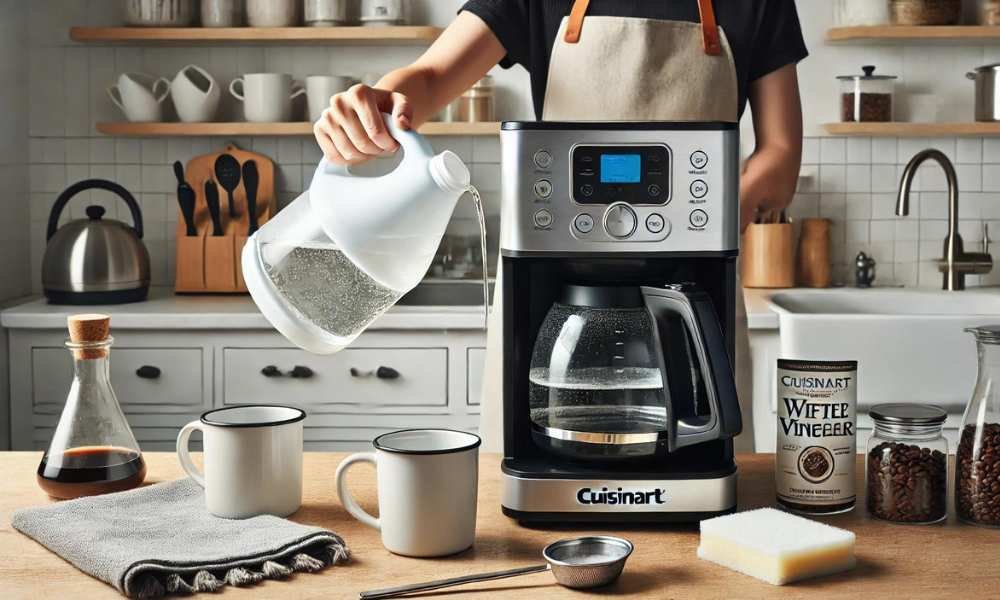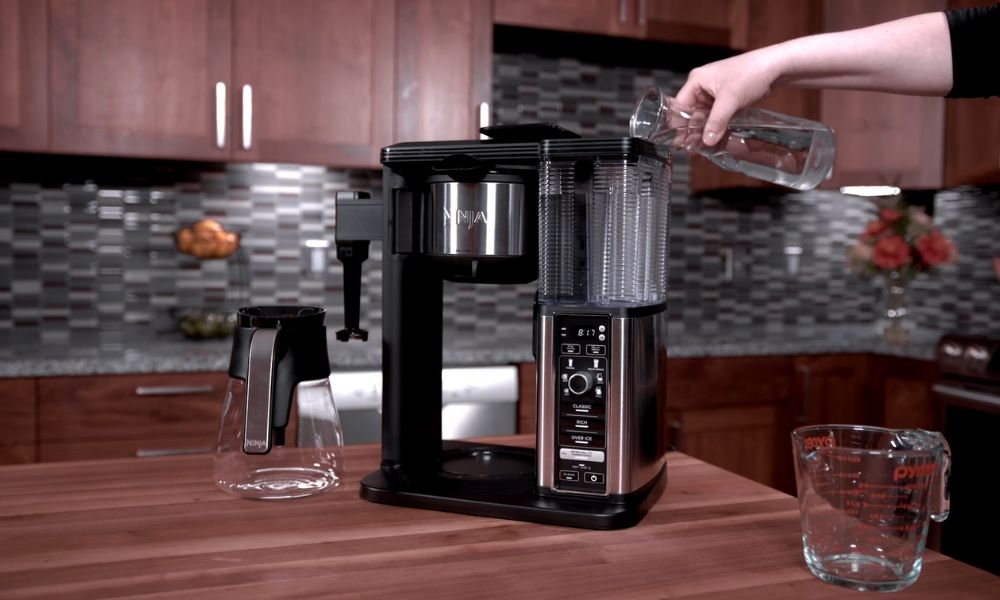Clean Cuisinart coffee maker with vinegar is an effective and eco-friendly method to ensure your machine continues to produce the best-tasting coffee. Over time, mineral deposits from water can build up, affecting the flavor of your coffee and the performance of your coffee maker. Using vinegar, a natural descaling agent, not only helps in removing these deposits but also sanitizes and deodorizes the machine without the use of harsh chemicals. This simple, step-by-step guide will walk you through the process of cleaning your Cuisinart coffee maker with vinegar, from what materials you’ll need to how to rinse your machine thoroughly after cleaning. By following these instructions, you can extend the life of your coffee maker and enjoy a fresher, cleaner taste in your coffee every day.
Understanding Your Cuisinart Coffee Maker
Understanding your Cuisinart coffee maker is key to getting the most out of your daily brew. Cuisinart offers a range of models, each with unique features designed to cater to diverse preferences and brewing needs. Whether you prefer a simple drip coffee or a customizable coffee experience, knowing how to optimize your machine’s settings can enhance flavor and performance. This includes selecting the right grind size, adjusting brewing temperatures, and using the correct water-to-coffee ratio. Regular maintenance, such as cleaning with vinegar to remove mineral build-up, also plays a crucial role in ensuring your clean Cuisinart coffee maker with vinegar operates efficiently. Familiarize yourself with the specific functions and care recommendations of your model to consistently produce delicious, high-quality coffee.
Fill the reservoir and add the vinegar
Filling the reservoir of your appliance and adding vinegar is a simple yet effective method for cleaning and maintaining its performance. Start by emptying any remaining water or coffee from your machine. Fill the reservoir with equal parts water and white vinegar. This mixture acts as a natural descale, breaking down mineral deposits that can affect your machine’s efficiency and the taste of your coffee. Run a brewing cycle with this solution to thoroughly clean the internal components. After the cycle completes, flush the system by running two to three cycles with fresh water to remove any vinegar residue. This process ensures your appliance remains in optimal condition, providing the best flavor and functionality.
Begin the Cleaning Cycle
Beginning the cleaning cycle on your appliance is essential for maintaining its performance and ensuring the quality of your brews. To start, make sure your machine is turned off and cooled down. Add a cleaning solution, typically a mixture of water and white vinegar, to the reservoir to tackle mineral buildup and other residues. Turn on your machine and select the cleaning mode if available. If your model lacks a specific cleaning cycle, simply run a normal brew cycle with the solution. Read- How Do I Clean My Cuisinart Coffee Maker. This process helps dissolve impurities and flush out any accumulated deposits, leaving your appliance clean and ready to deliver excellent results with every use.
Flush with Water
Flushing your appliance with water after cleaning is a crucial step to ensure all cleaning residues are completely removed. Start by emptying any remaining cleaning solution from the reservoir. Refill it with fresh, cold water and run a full brewing cycle. This process helps to thoroughly rinse out any lingering vinegar or descaling solution, preventing any off-tastes in your next brews. For optimal results, it’s recommended to repeat this flushing process two to three times. Regular flushing not only enhances the taste of your beverages but also extends the lifespan of your appliance by keeping it clean and free from clogs and buildup.
Complete the Cycle
Completing the cleaning cycle in your appliance is key to maintaining its efficiency and ensuring the best beverage quality. After running a descaling solution through your machine, it’s important to finish the process by thoroughly flushing with water. This final step removes any residual cleaner, ensuring that your next cup of coffee or tea is pure and fresh-tasting. To complete the cycle, fill the reservoir with fresh water and run full brew cycles until the reservoir is empty. This not only cleans out any remaining solution but also primes your machine for optimal performance. Regular completion of the full cleaning cycle will keep your appliance in top condition.
Clean Removable Parts
Cleaning the removable parts of your appliance is crucial for maintaining hygiene and ensuring optimal performance. Begin by disassembling the parts that come into contact with coffee or water, such as the carafe, filter basket, and any other detachable components. Wash these parts with warm, soapy water using a soft sponge or cloth to remove coffee oils and residue effectively. For stubborn stains, a baking soda paste can be applied before rinsing thoroughly. Regular cleaning of these components not only prevents the buildup of harmful bacteria and mold but also enhances the flavor and quality of your coffee, ensuring a perfect cup every time.
Reassemble and Brew
Reassembling your appliance after cleaning and brewing your first cup is the final step to enjoying fresh, flavorful coffee. Once all removable parts have been thoroughly cleaned and dried, reattach them to your machine according to the manufacturer’s instructions. Ensure each piece is securely in place to avoid leaks or malfunction. After reassembly, fill the reservoir with fresh water and brew a test batch to ensure everything is working correctly. This not only helps confirm that the machine is clean but also primes it for regular use. Regular maintenance and correct reassembly ensure peak performance and the best tasting brews from your appliance.
Cleaning External Components
Cleaning the external components of your appliance is crucial for maintaining its appearance and functionality. Unplug the machine and wipe the exterior with a soft, damp cloth. Avoid abrasive materials and harsh cleaners that can damage the surface. For greasy spots, use a mild soapy solution, then rinse with a clean, damp cloth to remove soap residue. A microfiber cloth is ideal for polishing and preventing streaks on stainless steel or glossy finishes. Regular cleaning keeps your appliance looking new and promotes a hygienic kitchen environment.
Conclusion
Cleaning your Cuisinart coffee maker with vinegar is a straightforward and eco-friendly approach to maintaining your machine’s efficiency and ensuring the best coffee flavor. This method involves filling the reservoir with a mixture of equal parts vinegar and water, running a brewing cycle to descale and remove buildup, and then thoroughly flushing the system with fresh water to eliminate any vinegar taste. Regular cleaning not only prolongs the life of your coffee maker but also enhances your coffee experience by keeping the machine in optimal condition. Adopting this simple cleaning routine will ensure that your clean Cuisinart coffee maker with vinegar continues to produce delicious, fresh-tasting coffee every time.



